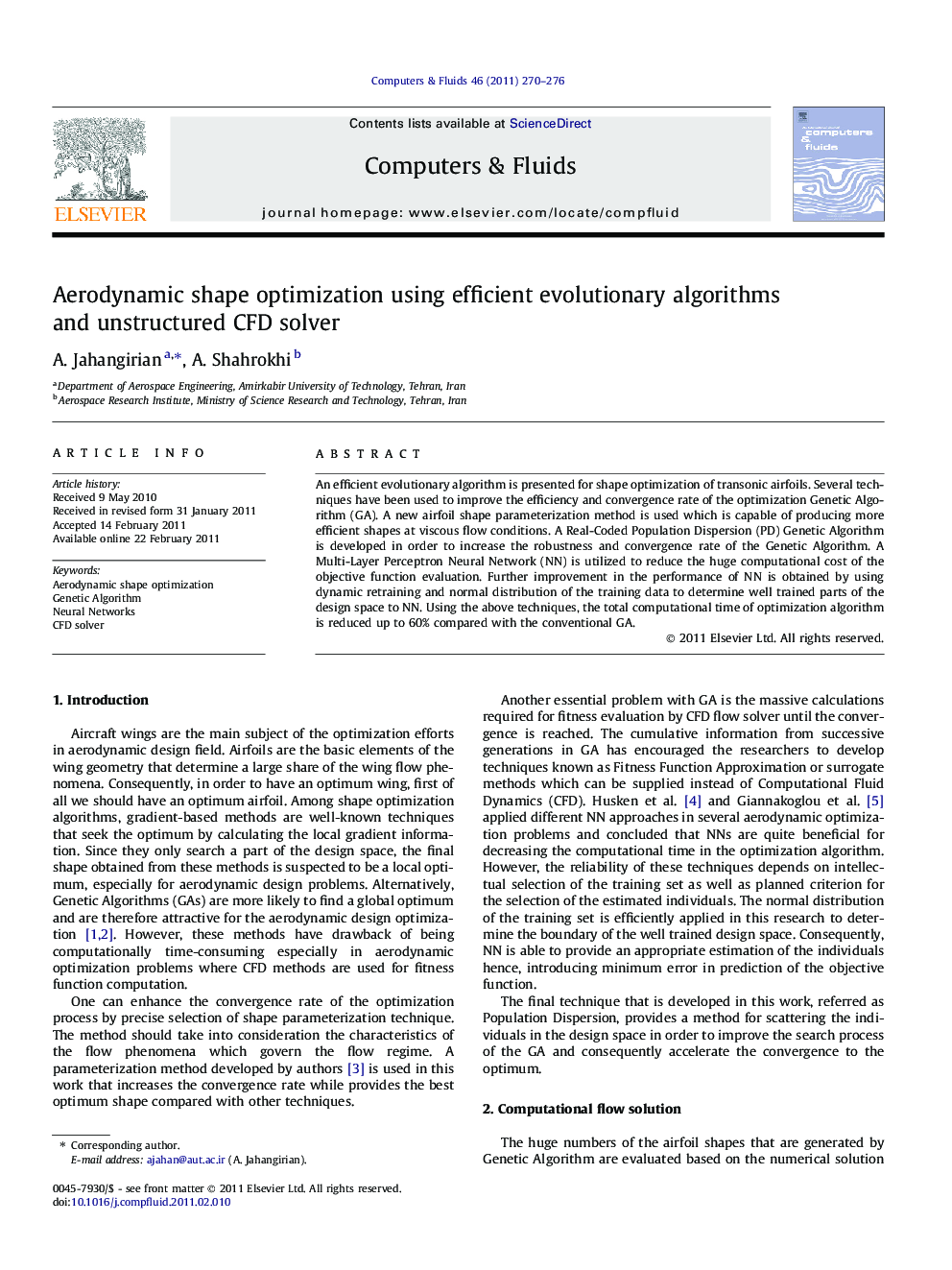| Article ID | Journal | Published Year | Pages | File Type |
|---|---|---|---|---|
| 762789 | Computers & Fluids | 2011 | 7 Pages |
An efficient evolutionary algorithm is presented for shape optimization of transonic airfoils. Several techniques have been used to improve the efficiency and convergence rate of the optimization Genetic Algorithm (GA). A new airfoil shape parameterization method is used which is capable of producing more efficient shapes at viscous flow conditions. A Real-Coded Population Dispersion (PD) Genetic Algorithm is developed in order to increase the robustness and convergence rate of the Genetic Algorithm. A Multi-Layer Perceptron Neural Network (NN) is utilized to reduce the huge computational cost of the objective function evaluation. Further improvement in the performance of NN is obtained by using dynamic retraining and normal distribution of the training data to determine well trained parts of the design space to NN. Using the above techniques, the total computational time of optimization algorithm is reduced up to 60% compared with the conventional GA.
